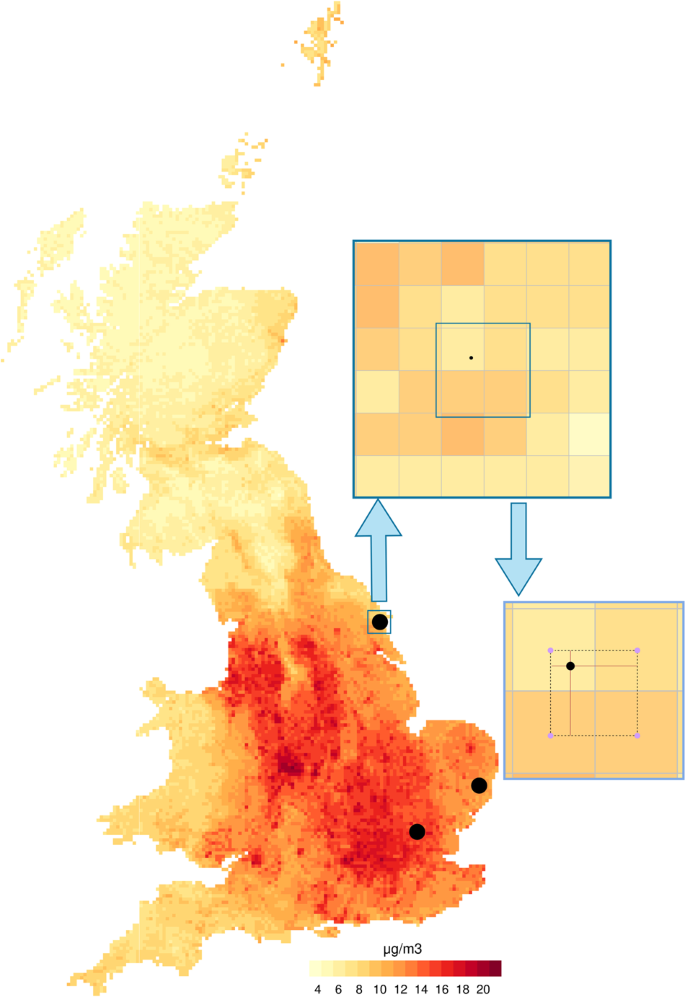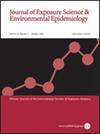Reconstructing individual-level exposures in cohort analyses of environmental risks: an example with the UK Biobank
IF 4.1
3区 医学
Q2 ENVIRONMENTAL SCIENCES
Journal of Exposure Science and Environmental Epidemiology
Pub Date : 2024-01-08
DOI:10.1038/s41370-023-00635-w
引用次数: 0
Abstract
Recent developments in linkage procedures and exposure modelling offer great prospects for cohort analyses on the health risks of environmental factors. However, assigning individual-level exposures to large population-based cohorts poses methodological and practical problems. In this contribution, we illustrate a linkage framework to reconstruct environmental exposures for individual-level epidemiological analyses, discussing methodological and practical issues such as residential mobility and privacy concerns. The framework outlined here requires the availability of individual residential histories with related time periods, as well as high-resolution spatio-temporal maps of environmental exposures. The linkage process is carried out in three steps: (1) spatial alignment of the exposure maps and residential locations to extract address-specific exposure series; (2) reconstruction of individual-level exposure histories accounting for residential changes during the follow-up; (3) flexible definition of exposure summaries consistent with alternative research questions and epidemiological designs. The procedure is exemplified by the linkage and processing of daily averages of air pollution for the UK Biobank cohort using gridded spatio-temporal maps across Great Britain. This results in the extraction of exposure summaries suitable for epidemiological analyses of both short and long-term risk associations and, in general, for the investigation of temporal dependencies. The linkage framework presented here is generally applicable to multiple environmental stressors and can be extended beyond the reconstruction of residential exposures. This contribution describes a linkage framework to assign individual-level environmental exposures to population-based cohorts using high-resolution spatio-temporal exposure. The framework can be used to address current limitations of exposure assessment for the analysis of health risks associated with environmental stressors. The linkage of detailed exposure information at the individual level offers the opportunity to define flexible exposure summaries tailored to specific study designs and research questions. The application of the framework is exemplified by the linkage of fine particulate matter (PM2.5) exposures to the UK Biobank cohort.


在环境风险队列分析中重建个人层面的暴露:以英国生物库为例。
联系程序和暴露模型的最新发展为环境因素的健康风险队列分析提供了广阔的前景。然而,将个体水平的暴露分配给基于人群的大型队列会带来方法和实际问题。在本文中,我们阐述了一种关联框架,用于重建个体水平流行病学分析的环境暴露,并讨论了方法和实际问题,如居住地的流动性和隐私问题。本文概述的框架要求提供具有相关时间段的个人居住历史,以及高分辨率的环境暴露时空地图。联系过程分为三个步骤:(1) 对暴露地图和居住地点进行空间配准,以提取特定地址的暴露序列;(2) 根据随访期间居住地的变化,重建个人层面的暴露历史;(3) 灵活定义暴露摘要,使其与其他研究问题和流行病学设计相一致。英国生物库队列的空气污染日平均值的链接和处理过程就是该程序的例证,使用的是英国各地的网格时空地图。这样就可以提取出适合对短期和长期风险关联进行流行病学分析的暴露摘要,并在总体上对时间依赖性进行调查。这里介绍的联系框架一般适用于多种环境压力源,并可扩展到重建居住暴露之外。影响:本文介绍了一种联系框架,利用高分辨率时空暴露将个体水平的环境暴露分配到基于人群的队列中。该框架可用于解决目前暴露评估在分析与环境压力源相关的健康风险方面的局限性。个人层面的详细暴露信息链接为根据具体的研究设计和研究问题灵活定义暴露摘要提供了机会。细颗粒物(PM2.5)暴露与英国生物库队列的联系就是该框架应用的例证。
本文章由计算机程序翻译,如有差异,请以英文原文为准。
求助全文
约1分钟内获得全文
求助全文
来源期刊
CiteScore
8.90
自引率
6.70%
发文量
93
审稿时长
3 months
期刊介绍:
Journal of Exposure Science and Environmental Epidemiology (JESEE) aims to be the premier and authoritative source of information on advances in exposure science for professionals in a wide range of environmental and public health disciplines.
JESEE publishes original peer-reviewed research presenting significant advances in exposure science and exposure analysis, including development and application of the latest technologies for measuring exposures, and innovative computational approaches for translating novel data streams to characterize and predict exposures. The types of papers published in the research section of JESEE are original research articles, translation studies, and correspondence. Reported results should further understanding of the relationship between environmental exposure and human health, describe evaluated novel exposure science tools, or demonstrate potential of exposure science to enable decisions and actions that promote and protect human health.

 求助内容:
求助内容: 应助结果提醒方式:
应助结果提醒方式:


